Fungi are fundamental organisms in the planet’s ecosystems. Although they are often associated only with diseases or culinary ingredients, their role actually spans various fields such as ecology, medicine, and agriculture. In agriculture, fungi have gained great importance in recent years due to their potential to improve soil fertility and promote more sustainable farming practices. To discover the benefits of fungi, read along:

General Characteristics of Fungi
Fungi belong to the kingdom Fungi, a group of eukaryotic organisms that are distinct from plants, animals, and bacteria. Unlike plants, fungi do not perform photosynthesis; instead, they obtain nutrients by absorption, decomposing organic matter. Some of their main characteristics include:
Structure and Morphology
Most fungi have a filamentous structure, composed of hyphae that form a mycelium. This mycelium is the vegetative body of the fungus and can extend underground, interacting with roots, organic matter, and other soil organisms.
Reproduction
Fungi can reproduce both sexually and asexually through spores. These spores disperse easily through air, water, or animals, allowing them to colonize different environments.
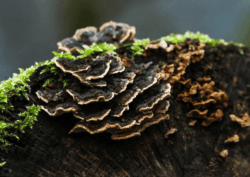
Diversity
There are over 100,000 known species of fungi, although it is estimated that millions more remain undiscovered. These include molds, yeasts, mushrooms, and microscopic soil fungi.
Ecological Role
Fungi perform essential functions in ecosystems as decomposers, symbionts, and parasites. In particular, decomposer fungi recycle nutrients by breaking down organic matter, while symbiotic fungi, such as mycorrhizae, establish beneficial relationships with plants.
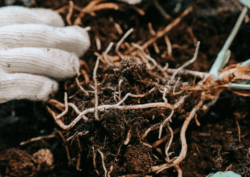
Fungi and Soil Fertility: Mycorrhizae
One of the main contributions of fungi to agriculture is their ability to improve soil fertility through associations with plant roots. These associations are known as mycorrhizae and represent a symbiosis between soil fungi and the roots of most terrestrial plants.
- What are Mycorrhizae?
Mycorrhizae are symbiotic associations where the fungus facilitates the absorption of nutrients that are difficult for the plant to assimilate, such as phosphorus and nitrogen, while the plant provides the fungus with sugars produced by photosynthesis. There are several types of mycorrhizae, but the most common in agriculture are endomycorrhizae and endo-ecto mycorrhizae.
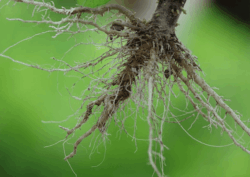
Benefits of Mycorrhizae in Agriculture
- Improved nutrient absorption: They increase the surface area of roots, facilitating nutrient uptake.
- Greater stress tolerance: They help crops resist factors such as drought, disease incidence, and growth alterations caused by saline soil conditions.
- Improved soil structure: Mycorrhizal hyphae contribute to the formation of soil aggregates, creating a better structure that enhances aeration and water retention.
- Reduction of chemical fertilizers: By improving absorption efficiency, they reduce the need for fertilizers, utilizing the nutrients plants need for development.
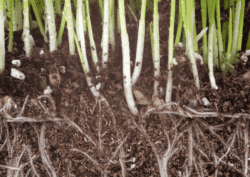
Use of Fungi as Biological Fertilizers
In the context of ecological and sustainable agriculture, fungi are being used as biofertilizers—living microorganisms that improve soil fertility and positively influence plant growth and nutrition.
- Mycorrhizal biofertilizers: Commercial inoculants containing spores of mycorrhizal fungi are applied to the soil or directly to roots during planting or transplanting. These inoculants enable early symbiosis with the plant and enhance its development.
- Decomposer fungi as soil enhancers: Some saprophytic fungi (those that decompose organic matter) are also used in composting or organic amendments, helping to break down agricultural waste and enrich the soil with nutrients available to plants.

Advantages of Using Fungi in Agriculture
- Sustainability: They reduce dependency on chemical products and support soil biodiversity.
- Increased yields: They promote plant growth through more efficient nutrition.
- Agricultural resilience: They help plants withstand diseases, droughts, and other adverse conditions.
- Regeneration of degraded soils: In deteriorated systems, mycorrhizal associations can restore soil health.
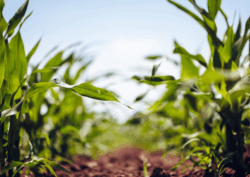
Challenges and Future Perspectives
Despite their many benefits, the use of fungi as fertilizers still faces some challenges:
- Lack of technical knowledge: Many farmers are not yet familiar with the proper management and use of beneficial fungi in agriculture.
- Specific conditions: Some mycorrhizal species require particular conditions to establish successfully (humidity and temperature).
- Product quality: There is a need to improve regulation regarding the quality and efficacy of inoculant types and fungal species available in the agricultural market.
However, advances in scientific research and growing environmental awareness are driving their responsible use and management. It is expected that in the near future, fungi will play a central role in regenerative, agroecological, and sustainable agricultural systems.

Fungi are versatile and essential organisms for life on Earth. In agriculture, their use as biological fertilizers represents an innovative and sustainable solution to current food production challenges. Through symbiotic associations like mycorrhizae, and through their role as decomposers or biostimulants, fungi offer a viable alternative to improve soil health, reduce chemical use, and increase agricultural productivity. As agriculture advances toward more environmentally friendly practices, fungi will occupy an increasingly important place in future production systems.
Frequently Asked Questions about the Use of Fungi in Agriculture
- What benefits do fungi provide to agricultural soils?
Fungi improve soil fertility by enhancing nutrient absorption, increasing water retention, and contributing to the regeneration of degraded soils.
- What are mycorrhizae and why are they important in crops?
Mycorrhizae are symbiotic associations between fungi and plant roots that help plants absorb essential nutrients such as phosphorus and nitrogen, while also improving their resistance to drought and diseases.
- What types of fungi are used as biofertilizers?
The most common are mycorrhizal fungi, which establish symbiotic relationships with roots, and decomposer fungi, which enrich the soil by transforming organic matter into available nutrients.
- What are the main challenges of applying fungi in agriculture?
Key challenges include adaptation to different soil and climate conditions, variability in the quality of available biological products, and the lack of technical knowledge for their efficient management in the field.
- How can I get more information about fungal biofertilizers?
At Ferti-Organic, we offer fungus-based solutions, such as Mycorrhizae Ultrafine Endo and Mycorrhizae Ultrafine Endo-Ecto, which help improve soil fertility and crop development.
If you would like personalized advice to find out which option is best for your crop and soil conditions, contact us at info@ferti-organic.com, and our team will assist you directly.





 (956) 574-8280
(956) 574-8280 info@ferti-organic.com
info@ferti-organic.com